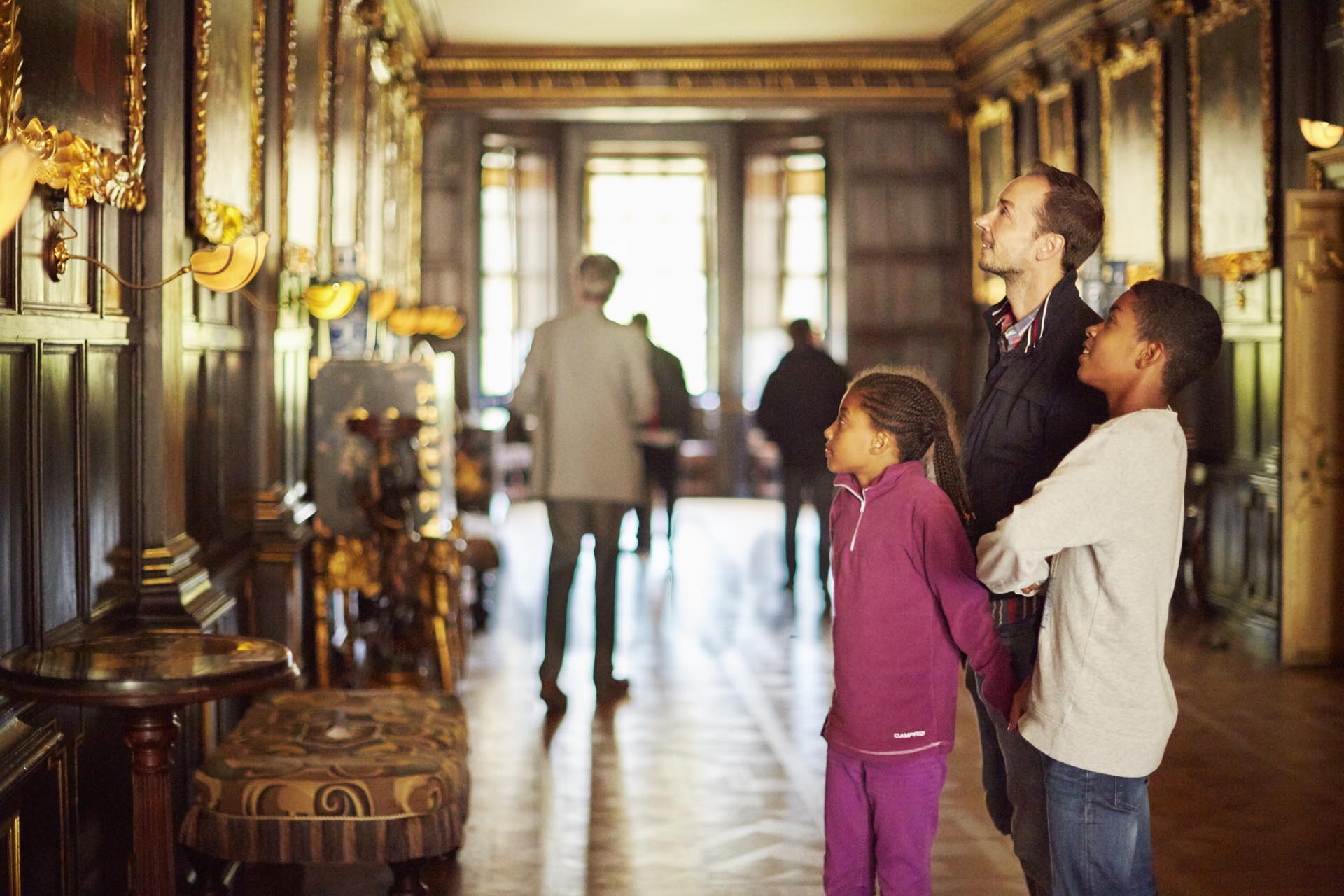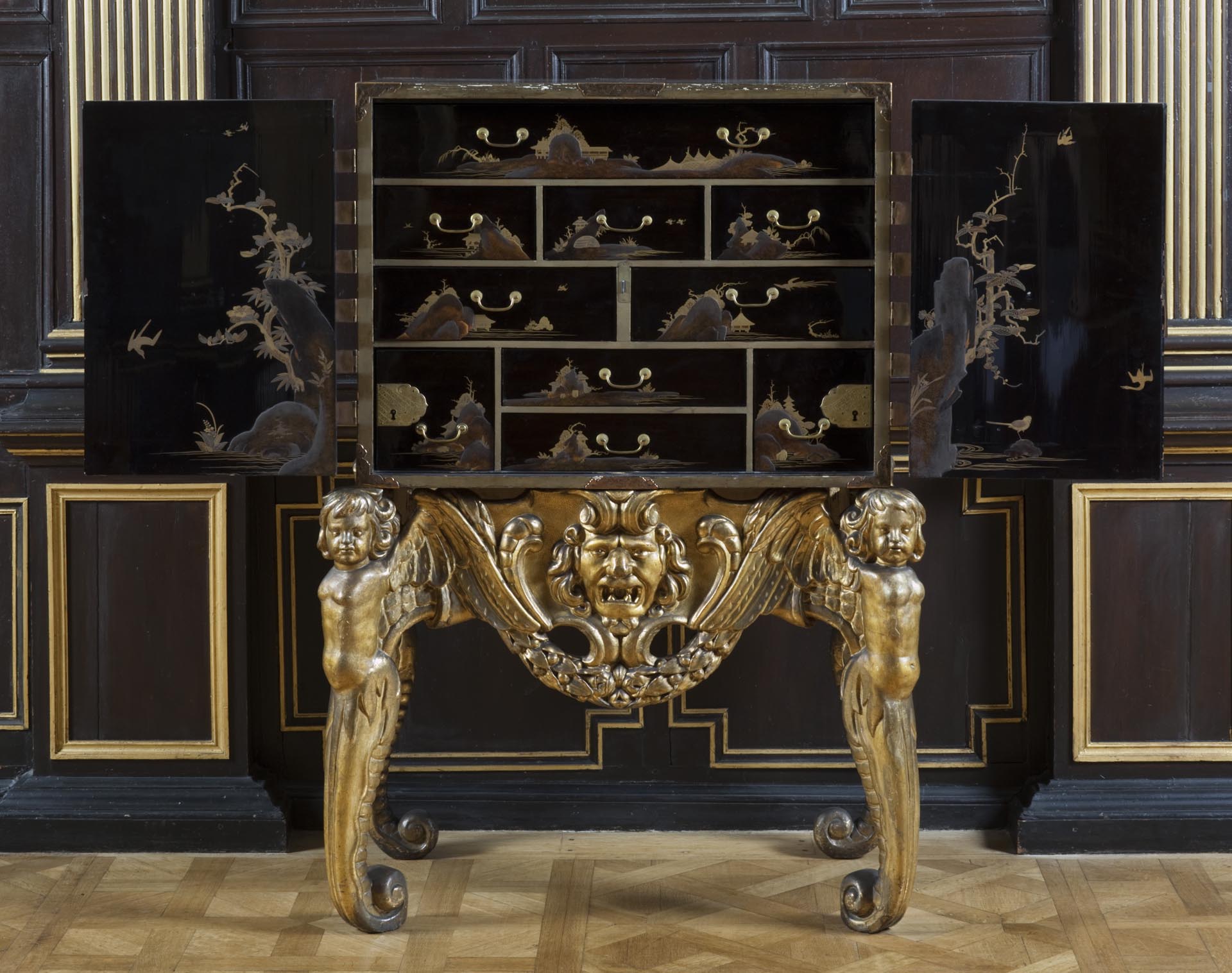A brief history
Built in 1610 during the reign of James I and remodelled in 1637–39 by the future first Earl of Dysart, Ham House and its through centuries of English history while remaining representative of the styles and culture of the original inhabitants. It is one of the few places where Caroline décor — as developed by British architect Inigo Jones and familiar to Peter Paul Rubens and Anthony van Dyck — is still preserved at its finest.
Ham was largely the vision of Elizabeth Murray, the Duchess of Lauderdale (later the Countess of Dysart), who played an important role in the machinations of the English Civil War and later the restoration of the monarchy.
In 1672 Elizabeth married the wealthy John Maitland, Duke of Lauderdale, her second marriage. Together they made Ham House one of the most beautiful and luxuriously furnished restoration houses in England. They collected exotic furniture and brought in craftsmen to transform the house into the showpiece home we see today.
Cabinet secrets
For instance, Ham House is home to a rare collection of cabinets, which are opened twice a year for visitors to explore their unique artisanship during the Cabinet Secrets showcase. This includes examples of marquetry, lacquer and inlay, collected from countries including Japan, China, and the Netherlands as well as England.
The whipping boy
William Murray, later Earl of Dysart was future King Charles I’s whipping boy. It would have been unthinkable to actually beat the heir to the throne if he misbehaved, so the prince had a whipping boy; who would take physical punishment on his behalf.
The future King and future Earl stayed close friends as they grew to adulthood. In 1628 Charles gave William a lease on Ham House and the surrounding riverside estate in Richmond, on the outskirts of London. Unfortunately not long after that the civil war broke out and Murrey dedicated his life to the battles on the King’s side and tried to raise money for the Royalist cause.
Dangerous liaisons
Despite being defeated by Parliamentarians, Murray’s daughter Elizabeth saved Ham House by simultaneously establishing good relations with Oliver Cromwell and his Parliamentary supporters, and at the same time sending secret messages to the exiled Charles II. When the monarchy was restored in 1660 Elizabeth was made owner in her own right, and Ham House once more was at the centre of extravagant entertaining.
What is truly remarkable is how little the house has changed since Elizabeth Murray’s death. The building stayed in the Tolemache family – Elizabeth’s descendants from her first marriage – for the next three centuries. Since 1948 the house and gardens have been managed by the National Trust.
Ham House on screen
Ham House is also a popular film location, for example, the exterior and interior of the building appeared in The Young Victoria. You will definitely recognise the grand and impressive reception space of the Great Hall, the staircase and the black-and-white checkered floors in the beginning of the movie. The Long Gallery complete with portraits of the Duke and Duchess’ and other family members and important friends, was the setting for Count Andrei Vronsky’s apartments in Anna Karenina.
The ghost of Ham House
The house is one of the most haunted in Britain; it was subject to a year-long investigation by the Ghost Club which recorded a number of phenomena that remain ‘unexplained’.
Visitors attest to sightings of the Duchess of Lauderdale and her dog, which is reported to have been seen running down the corridors, despite the fact no dogs are allowed in the building. It is also said that the aroma of the sweet Virginia pipe tobacco that the Duke smoked after meals can be detected in the dining room.
Beautiful gardens
The gardens, like the house, were designed to impress. Eight square lawns or ‘plats’, a ‘wilderness’, a formal lavender parterre and a large walled kitchen garden are among the main features that give us a glimpse of 17th century life in a house of this calibre.
After exploring many fascinating areas of the building, head outside to wander around stunning open areas filled with the abundance of fragrant lavender which scents the air with its calming effects and carpets the garden with soft purple tones.
You can also discover the ‘wilderness’ – it’s a common part of formal gardens of the period where trees and shrubs crossed with hedge-lined paths set out a geometric pattern.


More information about Ham House, opening times and tickets can be found here.
Image credits: © National Trust












